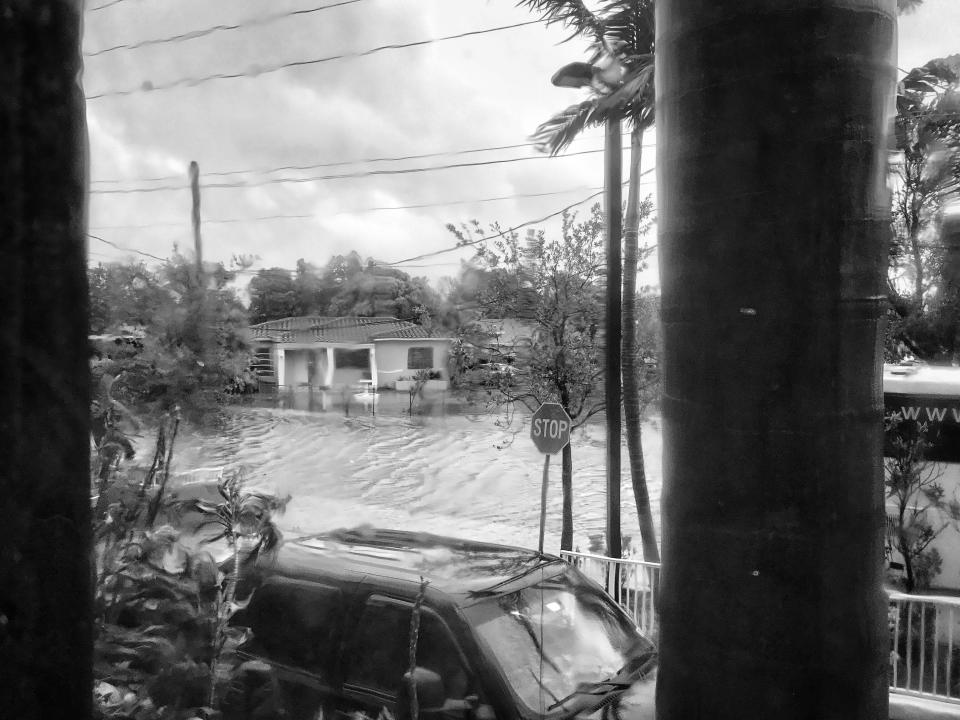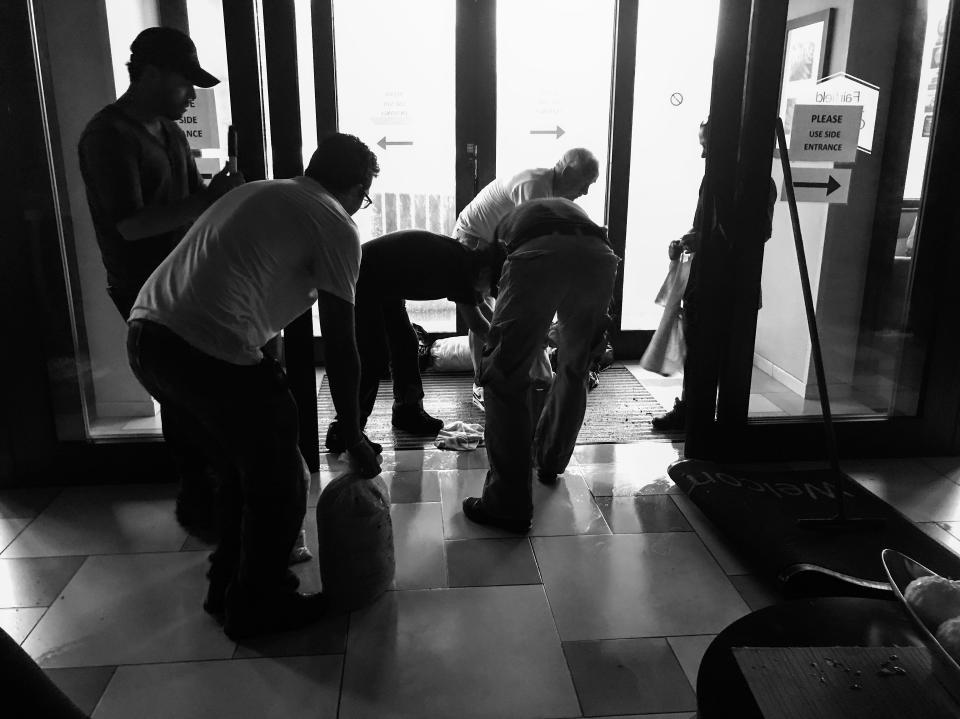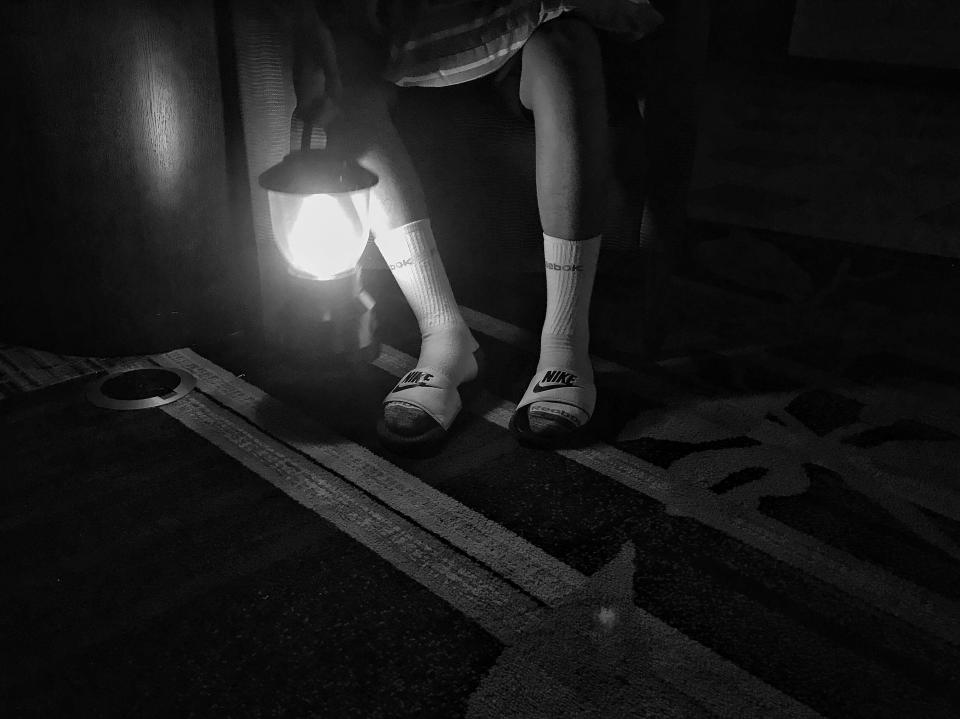At Miami airport hotel, Hurricane Irma demonstrates the fury of nature

MIAMI — The wind began to blow, and it seemed as if it would never stop blowing — ferocious gusts that howled through the thick, shatterproof glass windows and, at their worst, sent trembles through the reinforced concrete building that had been designed by engineers who years ago could only imagine the ruthlessness of Mother Nature and her storms.
When guests at the Fairfield Inn and Suites near the Miami International Airport, a few miles from the city’s center, went to bed on Saturday night, Hurricane Irma was swirling hundreds of miles away, taking aim toward the Florida Keys and the state’s western coast. Miami, initially forecasted to take a direct hit from the projected Category 5 storm, was to be spared the brunt of Irma’s fury, meteorologists said. And aside from being hit by strong winds and rain from feeder bands on the outskirts of the storm, South Florida had dodged a bullet. That’s what the forecast said.
But as advanced as science and weather prediction has become in this modern era, in which some radars employed in places like Oklahoma’s Tornado Alley can often show a storm’s path right down to the crack in a sidewalk, Mother Nature is never completely predictable. And on Sunday morning, people here woke up to the wail of winds that could blow you down in an instant and driving horizontal rain that pierced you like little needles if you dared step outside.

On the hotel television, which flickered on and off through power surges that began well before dawn, John Morales, the grizzled NBC affiliate meteorologist who has guided South Florida like a sage through storm after storm, suddenly looked grave. Irma had wobbled more to the east than the initial forecast projected. And the storm, he said, seemed to be “over-delivering” to the Miami area. As the storm churned around, the city was about to be hit by extreme wind gusts in upwards of 100 miles per hour — just 30 miles per hour less than what Irma delivered while making landfall on the Florida Keys.
Outside, it was impossible to imagine the wind could get worse. Exiting through a side door to the hotel’s west parking lot, a crowd of people, including journalists, emergency workers and local residents, protected by the concrete building and a large awning, stood gawking at the storm. The wind was blowing from east to west, straight-line winds that were already sending palm trees sideways and shaking nearby signs, including one at the corner gas station that shook precariously with each gust. Every few seconds, a spray of rain would drench everyone, as if they had boarded a ship caught in choppy seas, but nobody moved. They aimed their iPhones outward, hanging on tight as they shot photo and video — some even FaceTiming with relatives in dry places. A foreign news crew stood doing a live shot when suddenly there was the sound of an explosion — likely from a downed power line, but it was impossible to know. Everyone scrambled through the side door into the hotel lobby, where the lights flickered. On Twitter, local meteorologists said the Miami airport — just a few blocks away — had just measured its largest wind gust yet: 50 miles per hour. As the wind howled, shaking the front door and rattling the deactivated elevators, people stood incredulous. The wind would get twice as bad?

Not long after, the wind did exactly that. In the parking lot, heavy cars, including a king cab Ford F-150 King Ranch, one of the heaviest vehicles on the road, began to rock and shake from the winds, seeming as though they might be picked up and blown into the side of the building. The rain began to pound the windows so heavily it looked like someone was spraying a water hose directly at the glass. Out the back windows, the Marriott Hotel, a larger complex that had been evacuated on Friday amid fears of wind and floods, could barely be seen through a deluge of rain. Palm trees disintegrated with every gust, and several giant trees were uprooted along the main road leading to the airport. The cable went out, and the power flickered in and out. People rushed to charge their cellphones and everything else they could, knowing the electricity likely wouldn’t hold out long.
But there was a strange sense of calm in the lobby. Families, including many local residents who had come to the hotel for shelter, sat playing board games and eating breakfast. Many of them didn’t speak English. Every so often, they would gather at the window, staring out at the storm, marveling at what Mother Nature could do. They looked at their phones, trying to glean whatever news they could about what had happened to their homes.
The televisions had stopped working just as Irma had made landfall along the Keys, and the hotel Wi-Fi, zapped by the power surges, was down. Some guests had radios, but soon those weren’t working either, as stations, one by one, were felled by the storm. As the wind howled outside, a man ran up to a pair of reporters. “Is it true that Key West was completely wiped off the map? Someone is saying you can’t even see it on satellite images anymore,” he said. He had tried to load a news story on his phone, but his service, along with everyone else’s, was barely working. It was hard to know what was happening beyond the scene of fury outside the glass windows.

Just before the power went out for good, the television flickered on quickly enough to show a meteorologist suggesting the worst of the storm would soon be over. It was shortly after noon. But that didn’t happen. For hours, the wind blew harder and harder. Just when it seemed it wouldn’t get worse, it did. The pounding rain soon turned the road outside into a river that was about a foot and a half deep. Water began to seep through the windows, and hotel employees quickly scrambled to place sandbags near the front door, where water was pooling. The lights went out in the stairwells, and guests used their cellphones to light the way, until those died too. A boy with a lantern flashlight sat in the lobby, providing light. “You should rent that out to people who need to go to the bathroom,” his father told him. “We could make some money.”
For hours, the wind howled and the hotel creaked. Spotty cell service revealed streets in some parts of downtown Miami had been transformed into rivers, that the water had been sucked out of bays in Tampa and other cites along Florida’s western coast, where Irma was taking aim next. If Miami had only gotten a sliver of her wrath, what would be the fate of those directly in her path?
As daylight dimmed, the wind finally began to slow. Outside, the surrounding area was dark, including Miami International Airport. An estimated 1 million people in the Miami area had lost power. People found their way to their rooms in the darkened hallways, waiting for daylight to see what the storm had wrought.

Read more from Yahoo News:



